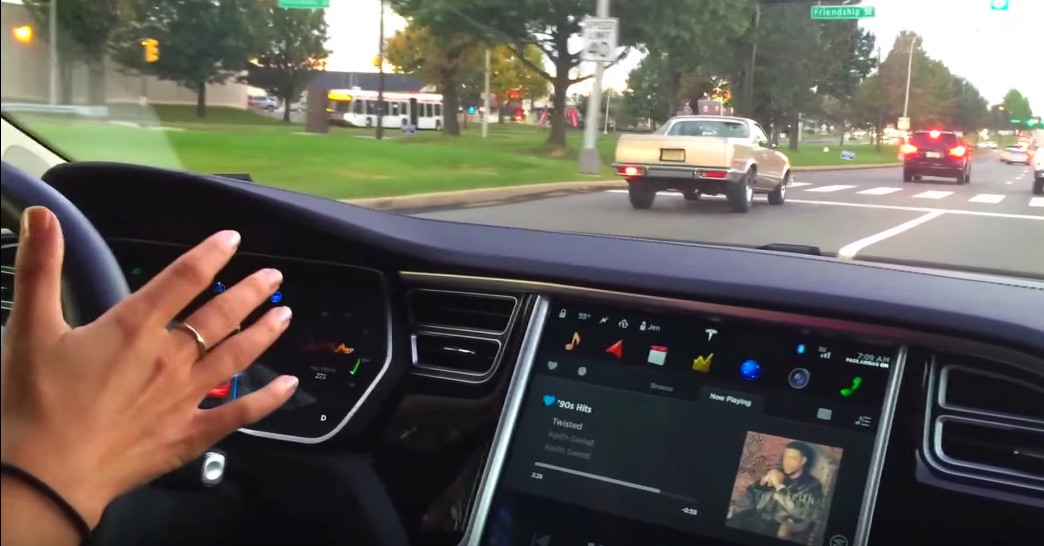Researchers involved with the Stanford University Dynamic Design Lab have completed a study that examines how human drivers respond when an autonomous driving system returns control of a car to them. The Lab’s mission, according to its website, is to “study the design and control of motion, especially as it relates to cars and vehicle safety. Our research blends analytical approaches to vehicle dynamics and control together with experiments in a variety of test vehicles and a healthy appreciation for the talents and demands of human drivers.” The results of the study were published on December 6 in the first edition of the journal Science Robotics.
Holly Russell, lead author of study and former graduate student at the Dynamic Design Lab says, “Many people have been doing research on paying attention and situation awareness. That’s very important. But, in addition, there is this physical change and we need to acknowledge that people’s performance might not be at its peak if they haven’t actively been participating in the driving.”
The report emphasizes that the DDL’s autonomous driving program is its own proprietary system and is not intended to mimic any particular autonomous driving system currently available from any automobile manufacturer, such as Tesla’s Autopilot.
The study found that the period of time known as “the handoff” — when the computer returns control of a car to a human driver — can be an especially risky period, especially if the speed of the vehicle has changed since the last time the person had direct control of the car. The amount of steering input required to accurately control a vehicle varies according to speed. Greater input is needed at slower speeds while less movement of the wheel is required at higher speeds.
People learn over time how to steer accurately at all speeds based on experience. But when some time elapses during which the driver is not directly involved in steering the car, the researchers found that drivers require a brief period of adjustment before they can accurately steer the car again. The greater the speed change while the computer is in control, the more erratic the human drivers were in their steering inputs upon resuming control.
“Even knowing about the change, being able to make a plan and do some explicit motor planning for how to compensate, you still saw a very different steering behavior and compromised performance,” said Lene Harbott, co-author of the research and a research associate in the Revs Program at Stanford.
Handoff From Computer to Human
The testing was done on a closed course. The participants drove for 15 seconds on a course that included a straightaway and a lane change. Then they took their hands off the wheel and the car took over, bringing them back to the start. After familiarizing themselves with the course four times, the researchers altered the steering ratio of the cars at the beginning of the next lap. The changes were designed to mimic the different steering inputs required at different speeds. The drivers then went around the course 10 more times.
Even though they were notified of the changes to the steering ratio, the drivers’ steering maneuvers differed significantly from their paths previous to the modifications during those ten laps. At the end, the steering ratios were returned to the original settings and the drivers drove 6 more laps around the course. Again the researchers found the drivers needed a period of adjustment to accurately steer the cars.
The DDL experiment is very similar to a classic neuroscience experiment that assesses motor adaptation. In one version, participants use a hand control to move a cursor on a screen to specific points. The way the cursor moves in response to their control is adjusted during the experiment and they, in turn, change their movements to make the cursor go where they want it to go.
Just as in the driving test, people who take part in the experiment have to adjust to changes in how the controller moves the cursor. They also must adjust a second time if the original response relationship is restored. People can performed this experiment themselves by adjusting the speed of the cursor on their personal computers.
“Even though there are really substantial differences between these classic experiments and the car trials, you can see this basic phenomena of adaptation and then after-effect of adaptation,” says IIana Nisky, another co-author of the study and a senior lecturer at Ben-Gurion University in Israel “What we learn in the laboratory studies of adaptation in neuroscience actually extends to real life.”
In neuroscience this is explained as a difference between explicit and implicit learning, Nisky explains. Even when a person is aware of a change, their implicit motor control is unaware of what that change means and can only figure out how to react through experience.
Federal and state regulators are currently working on guidelines that will apply to Level 5 autonomous cars. What the Stanford research shows is that until full autonomy becomes a reality, the “hand off” moment will represent a period of special risk, not because of any failing on the part of computers but rather because of limitations inherent in the brains of human drivers.
The best way to protect ourselves from that period of risk is to eliminate the “hand off” period entirely by ceding total control of driving to computers as soon as possible.











